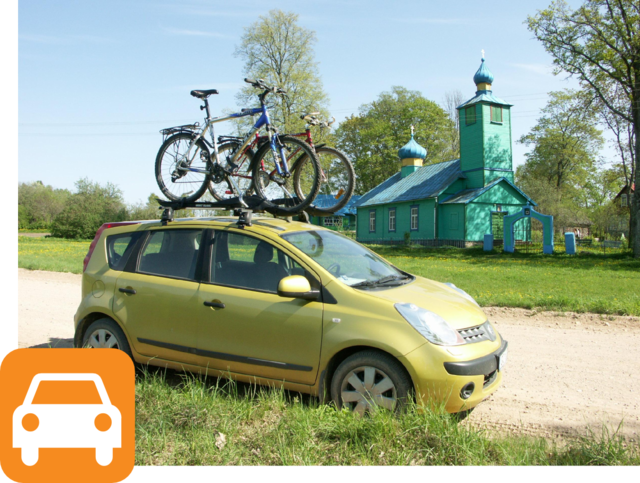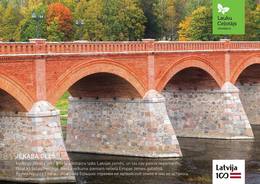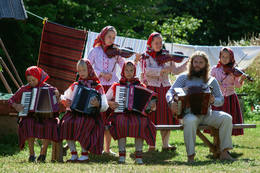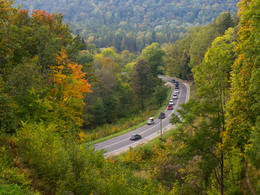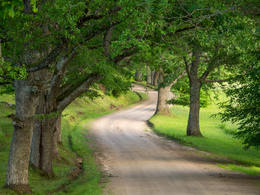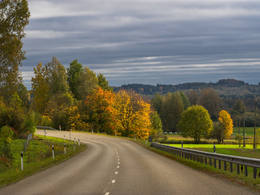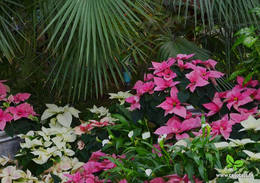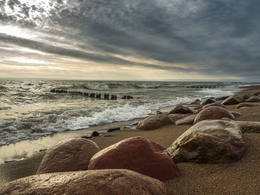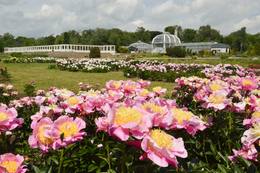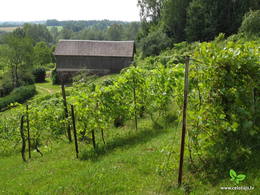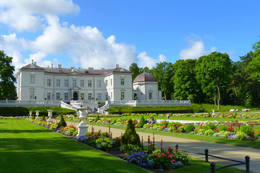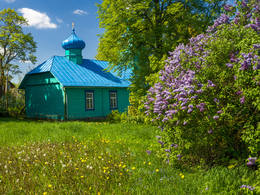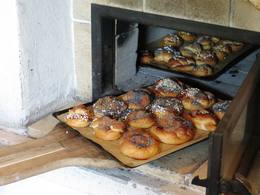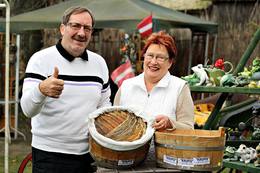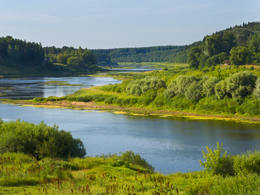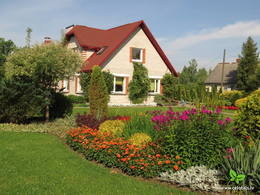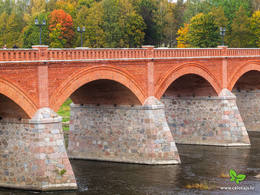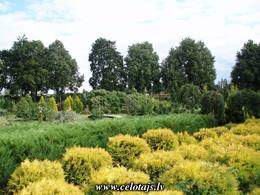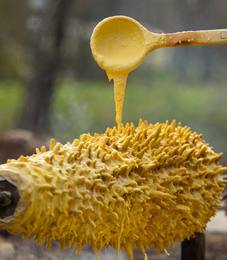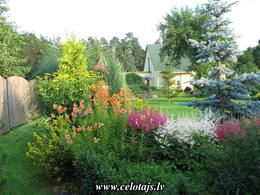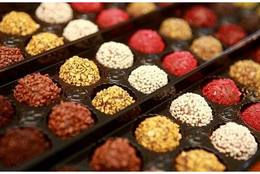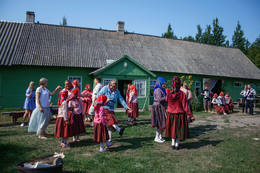Маршруты - на автомашине
Наши туры на машине помогут вам поглубже узнать страны Балтии и приведут вас в места, расположенные вне основных туристических маршрутов. Мы предоставляем вам детализированную информацию и карты на каждый день — достопримечательности, интересные места, кабачки, а также практические аспекты. Некоторые наши туры имеют более узкую специализацию, например, замки и поместья, местная жизнь, природные тропы или Балтийское море. Не все наши туры доступны на русском, поэтому мы советуем вам посмотреть на английском или немецком языке.
- Отправиться в тур можно в любое время в течение года, но мы рекомендуем путешествовать с апреля по октябрь, когда снег уже растаял и на дорогах не скользко.
- В цену предложения не входит аренда машины, но мы можем помочь вам взять желаемую машину напрокат .
- Перед вашим прибытием мы отправим вам персонализированную программу тура, с датами, местами размещения и дополнительными услугами, которые вы зарезервируете. Пример. (пожалуйста, ознакомьтесь со списком дополнительных услуг, возможных в каждом туре, в разделе «цена»).
- По прибытии в первую гостиницу на вашем маршруте вы получите детализированные дорожные карты на каждый день, описания с достопримечательностями, интересными местами, возможностями поесть вдоль маршрута, инструкциями по путешествию с места на место и ваучеры на зарезервированные вами услуги, а также на тур. Для ознакомления с возможными инструкциями по путешествию, пожалуйста, нажмите здесь (pdf файл). Координаты GPS доступны для некоторых туров.
- Для наших клиентов мы доступны 24 часа в сутки по телефону неотложной помощи.
Если у вас есть представление о том, каким образом вы хотели бы путешествовать по странам Балтии, мы можем помочь вам с организацией тура, и вы можете рассчитывать на советы во всем, что касается местной жизни.
Пути становления государственности Латвии
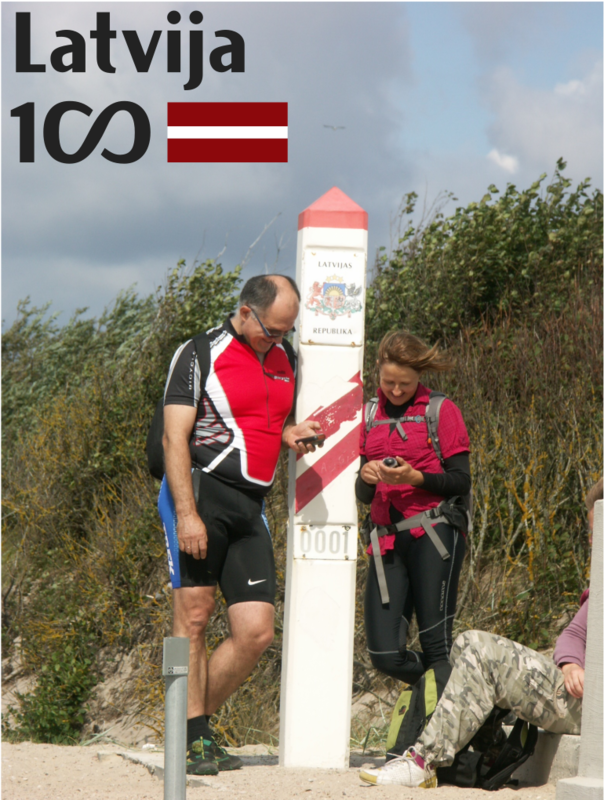 Семь путей – это путешествия по Латвии с целью ее познания. Эти пути посвящены трем временным измерениям – прошлому, настоящему и будущему, приглашая оглянуться на пути и перепетии становления Латвийского государства в недавнем и более отдаленном прошлом; оценить достижения и ресурсы настоящего и вместе планировать будущее Латвии. Эти пути позволяют ознакомиться с поворотами истории Латвии, личностями, местами и событиями, способствовавшими образованию государства и становлению национальной идентичности, оглянуться и на более отдаленное прошлое, вспоминая государственные образования, веками существовавшие на территории Латвии и ставшие частью латышского культурного пространства. И конечно же, эти пути предусмотрены для путешествий. Они увлекательны, с объектами осмотра, сельскими хозяйствами, богатые рассказами и воспоминаниями, живописно красивы.
Семь путей – это путешествия по Латвии с целью ее познания. Эти пути посвящены трем временным измерениям – прошлому, настоящему и будущему, приглашая оглянуться на пути и перепетии становления Латвийского государства в недавнем и более отдаленном прошлом; оценить достижения и ресурсы настоящего и вместе планировать будущее Латвии. Эти пути позволяют ознакомиться с поворотами истории Латвии, личностями, местами и событиями, способствовавшими образованию государства и становлению национальной идентичности, оглянуться и на более отдаленное прошлое, вспоминая государственные образования, веками существовавшие на территории Латвии и ставшие частью латышского культурного пространства. И конечно же, эти пути предусмотрены для путешествий. Они увлекательны, с объектами осмотра, сельскими хозяйствами, богатые рассказами и воспоминаниями, живописно красивы.
Смотреть маршруты и узнать больше о "Пути становления государственности Латвии".
Latvian Nature Routes
6 маршрутов «Даров села» для путешествия с удобствами
| Для удобства и лучшего ознакомления путешественников с хозяйствами «Даров села» мы разработали 6 маршрутов по Земгале, Центральному и Восточному Видземе, Латгалии, Северному и Южному Курземе. Маршруты разработаны таким образом, чтобы путешественники могли легко ориентироваться и планировать свою поездку. Каждый маршрут является круговым, то есть начинается и заканчивается в одном из городов Латвии, и проходит по главным автодорогам. На маршруте сгруппированы хозяйства «Даров села», к которым удобно подъехать с дуги маршрута, создавая новые варианты своего путешествия в зависимости от времени и интересов. | 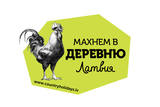 |
| В описании каждого маршрута имеется схематическая карта, указана информация о дорожном покрытии и расстояниях, описание хозяйств «Даров села», координаты GPS, контактная информация для связи с хозяевами, а также информация о находящихся поблизости информационных центрах туризма и местах для ночлега. | |

| Hазвание | Mаршрут | Длина |
|---|---|---|
| Южная Курземе | Лиепая – Гробиня – Дурбе – Цирава – Айзпуте – Скрунда – Салдус – Кулдига – Эдоле – Алсунга – Юркалне – Павилоста – Лиепая | 3 - 5 дня |
| Северная Курземе | Тукумс – Шлокенбек – Смарде – Озолниеки – Кандава – Сабиле – Талси – Валдемарпилс – Вандзене – Мерсрагс – Энгуре – Ридели – Тукумс | 3 - 4 дня |
| Земгале | Елгава – Свете – Земгале – Добеле – Тервете – Вилце – Элея – Пилсрундале – Бауска – Яунсауле – Скайсткалне – Барбеле – Вецумниеки – Миса – Иецава – Бранкас – Озолниеки – Елгава | 2 - 3 дня |
| Видземе | Сигулда – Лигатне – Цесис – Рауна – Смилтене – Бломе – Валмиера – Буртниеки – Руена – Валмиера – Страупе – Лимбажи – Рагана – Сигулда | 3 - 4 дня |
| Центральная и Восточная Видземе | Мадона – Саулескалнс – Эргли – Юмурда – Вецпиебалга – Яунпиебалга – Ранка – Леясциемс – Алуксне – Калнцемпьи – Стамериена – Гулбене – Цесвайне – Мадона | 4 - 5 дня |
| Латгале | Резекне – Спунджани – Аглона – Вишки – Даугавпилс – Краслава – Дагда – Андрупене – Липушки – Резекне – Лудза – Карсава – Роговка – Илзескалнс – Резекне | 4 - 5 дня |
Этномаршруты
Для тех, кто думает, что Латвия в основном делится на Видземе, Курземе, Земгале и Латгале, в этом году предоставляется возможность открыть для себя географию новых краев Латвии. У нас есть Берег ливов, Суйтский край, Нижнее Курземе, Селия, Пиебалга – в каждой свои традиции, характерные блюда, отличающийся язык и речь.
Эти 2 - 3-дневные маршруты, главным образом, предназначены для автотуристов, но на маршрутах есть и места (например, природные тропы, парки и др.), по которым можно передвигаться пешком. По окрестностям маршрутов можно передвигаться и на велосипеде.
| Hазвание | Mаршрут | Длина |
|---|---|---|
| Вдоль правого берега Даугавы | Рига – Огре – Кегумс – Лиелварде – Айзкраукле – Кокнесе – Плявиняс – Екабпилс – Ливаны – Даугавпилс – Краслава | 2 - 3 дня |
| Loba dīna Latgolā! По историческому краю Латгалии | Резекне – Лудза – Пилда – Столерова – Кауната – Андрупене – Дагда – Яунаглона – Аглона – Айзкалне – Прейли – Декшарес – Варакляны – Виляны – Резекне | 3 - 4 дня |
| По Нижнему Курземе | Лиепая – Папе – Руцава – Барта – Калети – Грамзда – Приекуле – Гробиня – Лиепая | 3 дня |
| В гостях у вентиней. Вдоль берега ливов | Вентспилс – Мазирбе – Колка – Гипка – Кальки – Дундага – Анце – Вентспилс | 2 - 3 дня |
| Из Мадонского в Пиебалгский исторический край | Мадона – Вецпиебалга – Инеши – Кайве – Лоде – Таурене – Дзербене – Друсти – Яунпиебалга – Ранка – Лизумс – Друвиена – Перлис – Граши – Цесвайне – Биксере – Мадона | 2 - 3 дня |
| По историческому краю Селия | Екабпилс – Биржи – Виесите – Саука – Нерета – Акнисте – Гарсене – Субате – Эглайне – Илуксте – Двиете – Бебрене – Рубени – Заса – Биржи – Екабпилс | 2 - 3 дня |
| От Кулдиги до края суйтов | Кулдига – Эдоле – Алсунга – Юркалне – Павилоста – Цирава – Айзпуте – Априки – Гудениеки – Кулдига | 2 - 3 дня |
| В сердце Земгале | Елгава – Добеле – Тервете – Вилце – Элея – Пилсрундале – Бауска – Скайсткалне – Барбеле – Стелпе – Иецава – Гароза – Елгава | 2 - 3 дня |

Маршруты Природа в Латвии
Предлагаем несколько в течение нескольких часов или 1-4 дня маршруты для авто путешественников, пешеходов, велосипедистов, лодочников в национальных парков, природных парков и других природных территорий.
| Латвия, Кемери НП | 1 - 2 дня | |
| Латвия, Слитере НП | 1 - 2 дня | |
| Рига - Добеле - Салдус - Лиепая - Вентспилс - Тукумс - Рига | 4 дней | |
| Latvija, Rāznas NP | 2 dienas | |
| Latvija, Ziemeļvidzemes biosfēras rezervāts | 1 diena | |
| Dvietes palienes dabas parks un apkārtne | Latvija, Dvietes dabas parks | 1 - 2 dienas |
| Pa Abavas senleju | Latvija, Abavas senlejas dabas parks | 1 - 2 dienas |
| Skaistākās skatu vietas | Latvija, Abavas senlejas dabas parks | 1 - 2 dienas |
| Обзор | Подробности |
|---|---|
|
Латвия
Путь ЕкабаЗнаменитый курземский герцог Екаб правил в Курземе и Земгале ровно 40 лет (1642 – 1682). Во время его правления происходят большие изменения – быстрыми темпами развивается кораблестроение, появляются первые мануфактуры и повышаются объемы сельскохозяйственного производства. |
|
|
Эстония, Латвия
6 Day tour: Authentic Experiences of Living Culture at UNESCO World Heritage SitesThe tour presents UNESCO World Heritage Sites and the Intangible Cultural Heritage of Latvia and Estonia. Experience the famous traditions of song, national crafts, architecture and food of the unique Suiti and Seto ethnic groups. |
|
|
Латвия
Вкусные приключения в регионе КурземеВ Риге насладитесь прогулкой по Старому городу с его узкими мощеными улицами, районом Югендстиля, посетите Центральный рынок, чтобы ощутить местную атмосферу. На пути из Риги посетите Национальный парк Кемери, славящийся своими серными источниками. Пройдитесь по Кемерской болотной тропе. Отдохните в центре отдыха на озере Валгумс - Босоногая тропа, Лабиринт, купание в озере, спа-процедуры и отличный ресторан. Затем маршрут ведет в Музей Шоколада Пуре и сворачивает к древней долине реки Абава, где с 16 века выращивают виноград. Здесь находится малая часть исторического Винного холма, но есть и новые сады и виноградники, которые в последние годы сильно развились. Посетите Педвале – художественное пространство под открытым небом, а затем и живописную Кулдигу с ее хорошо сохранившимся деревянным зодчеством. В деревенском доме в Скрунде посмотрите, как выращивают грибы шитаки и отведайте блюда, из них приготовленные. Лиепая – энергичный город с его внушительным военным наследием, которое сейчас доступно каждому, красивым пляжем из белого песка. Здесь можно отведать особое блюдо – лиепайскую треску. Затем вас ждет визит на козью ферму и дегустация их продукции. Пройдитесь по крутым берегам Юркалне. Откройте для себя Вентспилс с его многочисленными парками, замком Ливонского Ордена, променадом, молом и хорошо оборудованным пляжем. Маршрут идет до места, где Рижский Залив встречается с открытым морем – на мыс Колка, а затем вдоль побережья к Риге. На пути посетите рыбаков в Энгуре. Понаблюдайте за процессом копчения рыбы и попробуйте ее на вкус. Посетите исторический морской и спа курорт Юрмалу с ее красивыми виллами 19 века, пообедайте в местном ресторане, специализирующемся на блюдах из картофеля. |
|
|
Латвия
Кулинарный маршрут „Вкус Ливонии” - БАЛТИЙСКИЙ ПУТЬМаршрут «Балтийский путь»создан в честь уникальной акции, состоявшейся 23 августа 1989 года, во время которой жители трех стран взялись за руки и составили цепочку участников протяженностью около 600 км, соединившую столицы государств – Вильнюс, Ригу и Таллин. Исторически этот путь был известен и использовался еще в XIV–XV веках и даже раньше. В данном регионе блюда из злаков имеют древнюю историю, во многих местах пекут вкусный ржаной дрожжевой хлеб, в Видземе попробуйте его с конопляной пастой. Ячмень используют для выпечки карашей, варят в виде перловки и букстиньпутры (ячневой каши с картофелем). Из пшеничной муки выпекают водяные крендели с тмином. Путь зерна можно проследить в крестьянских хозяйствах и на восстановленных ветряных мельницах. К летнему солнцевороту во многих местах готовят Янов сыр, в обычные дни предлагаются и другие вкусные сыры из коровьего и козьего молока. Популярны приготовленная различными способами речная и озерная рыба, блюда из мяса местного домашнего скота и птицы, а также дичь, приправленная вкусными соусами. Дым живого огня придает сочному жаркому или горячему супу удивительный аромат. Гарнир – коренья и зелень, бобы, горох и грибы. В супы и салаты добавляют дикорастущие растения: щавель, листья одуванчика, сныти и молодой крапивы. Угоститесь свежим медом, пирожками со шпеком, открытыми пирогами, кренделями, десертом из ржаного хлеба, медовым тортом и пипаркукас. В предложении вы найдете и простые традиционные блюда, и романтические трапезы в замках и усадьбах, и специальное рыцарское угощение с использованием характерных для ливонских времен приправ. Жажду можно утолить травяными чаями, березовым соком, ягодными напитками, вкусным пивом, вином или стаканчиком более крепкого напитка. |
|
|
Латвия
Кулинарный маршрут „Вкус Ливонии” - ПУТЬ СВЕТАПо старинным торговым путям текли не только товары, но и знания и культура. Путь света связан со священником Эрнстом Глюком (Ernsts Gliks), литератором, переводчиком Библии и основателем школы для латышских детей, а также с гернгутерами – Карлисом Скалбе (Kārlis Skalbe), братьями Каудзитисами (brāļi Kaudzītes), Янисом Поруксом (Jānis Poruks), Антоном Аустриньшем (Antons Austriņš) и их духовным наследием. В Видземе пекут вкусный ржаной, ячменный, пшеничный и гречишный хлеб, а также хлеб из спельты. В тесто добавляют смесь различных семян, тмин, орехи, сухофрукты и конопляное семя. Из конопли готовят традиционную пасту, масло, пики с серым горохом, ее добавляют в конфеты «Коровка» и даже в шоколад. Пшеничную муку раньше использовали только по праздникам, в некоторых местах предлагают научиться печь из нее водяные крендели с солью и тмином. Путь зерна можно проследить в крестьянских хозяйствах и на восстановленных ветряных мельницах. Помимо традиционного Янова сыра попробуйте зеленый сыр и вкусные сыры из козьего молока. Местная гордость – судак из озера Буртниеку, выращенная здесь же форель, сомы и осетры, в сезон в некоторых местах предлагаются раки. Популярны блюда из мяса местной домашней птицы и скота, в том числе из крольчатины. Приусадебные кухни предлагают дичь и фазана с дарами леса и дикорастущими пряностями. В Видземе можно встретить Чесночную королеву и хозяйку, которая готовит порошки из растений. Попробуйте также пирожки, открытые пироги, медовый торт, десерты из взбитого творога, рябины, цидонии, яблок, сливок и ржаного хлеба, яблочные или черничные клецки. Жажду утолят травяные чаи с медом, березовый сок, ягодные лимонады или более крепкие напитки – вкусное пиво и вино. |
|
|
Латвия
Путь свободыИсторический путь из Риги в Лиепаю через Добеле, Салдус, Скрунду, Дурбе и Гробиню можно проследить уже с древних времен, с 13-го века. Об очень давних временах свидететельствуют также остатки поселения скандинавов вблизи Гробини. |
|
|
Латвия, Литва
Земгале - Аукштайтия: откуда на рынке появляются сельские лакомстваЭто путешествие предлагает вам посетить современные сельские хозяйства, основывающие свою деятельность на древних ремеслах и навыках.
Все, что выращивается и производится в сельской местности Латвии, можно найти на Рижском центральном рынке, поэтому путешествие начинается здесь – на одном из крупнейших и старейших рынков в Европе. Далее по плану – посещение нескольких сельских хозяйств с дегустацией их продукции - конфет из натуральных соков, сыра, блюд из зерновых, йогурта, мороженого. Традиционный крестьянский дом и музей техники. В каждом хозяйстве небольшая ознакомительная экскурсия. В маршрут путешествия включена также архитектурная жемчужина рококо и барокко 18 века архитектора Растрелли - Рундальский дворец с парком и розарием. В Бауске можно осмотреть расположенную в Ратуше коллекцию древних приспособлений для измерения, Бауский замок и Баускую пивоварню. В Литве предусмотрено посещение хозяйств по выращиванию лаванды, лекарственных растений и конопли, где можно будет приобрести их продукцию. Город Аникщяй (Anykščiai) предлагает прогулочную тропу над верхушками деревьев. Археологический комплекс в Кернаве (Kernavė) является объектом наследия ЮНЕСКО. В заключении путешествия – построенный в 14-15 веках Тракайский замок и Вильнюс. |
|
|
Литва
Аукштайтия: наследие старинных вкусов в современные дниАукштайтия является крупнейшим и одним из старейших регионов Литвы, который с 15-го века называют «истинной Литвой». В этом путешествии вы насладитесь сельскими дарами, которые Аукштайтский край предлагает сегодня. |
|
|
Латвия
Путь светаДревние торговые пути способствовали распространению не только товаров, но и знаний, культуры и всего того, что было в то время новым и неизвестным. |
|
|
Латвия
The Latgale Milk TourHere you will learn about home-based manufacturers, farms, companies and others in Latgale that produce various dairy products such as milk, yogurt, cottage cheese, cheese, ice cream, etc. Start in Preiļi, which is known as Latvia’s cheese capital. The route passes along the Teiči nature reserve, with a viewing tower at the side of the road, also crossing Lubāna wetlands, which are of European importance for environmental protection. Drive on to Rēzekne (churches, a monument to Māra of Latgale, “Gors,” “Zeimuļš”, etc.). Nature lovers will love the Rāzna National Park with Lake Rāzna, Mākoņkalns hill and the master ceramicist Evalds Vasiļevskis. From Dagda, head to Aglona, which is a centre for Roman Catholic worshippers, and Lake Rušons before returning to your starting point. |
|
|
Латвия
Земгале: молоко и хлеб на латышском столеЗемгальский регион - плодородная равнина. Здесь есть много современных земледельческих хозяйств, среди которых есть и такие, которые предлагают познакомиться с сельской жизнью и наследием сельскохозяйственной истории. Путешествие начинается в Риге и продолжается по «Млечному пути» - экскурсией на молочную ферму. Затем Елгава, столица бывшего Курляндского герцогства (16-18 в.в.), с историей которой можно ознакомиться, посетив интерактивную музейную экспозицию в Башне Елгавской церкви Святой Троицы и полюбовавшись панорамой города с 9-го этажа. Далее на сельском дворе вас ждет рассказ о латышских традициях и выпечка хлеба вместе с хозяйкой. После этого – знакомство с зерноводческим хозяйством, где можно осмотреть коллекцию оборудования для переработки молока, а для детей оборудован парк развлечений. |
|
|
Латвия
Декоративные сады и паркиМаршрут проходит по прекрасным цветочным садам Курземе и Жемайтии. В Кандаве находится самая большая коллекция ирисов. «Миеркални» является крупнейшим садом лилейника в Восточной Европе с более чем 1000 его сортами. Владелец производит также фруктовые и ягодные вина. В природном парке Талсинской возвышенности находятся яблоневые сады Курземниеков, где можно приобрести фрукты или продукты из них (сушеные яблоки, яблочные чипсы, соки). В хозяйстве окружающей среды и здоровья «Упмали» готовят чай, смеси из трав, растительные масла, особые бальзамы, косметику, травяное мыло и т. д. - под маркой Анна Берманс. В Саулескалнском дендрарии находится самая старая в Латвии 50-летняя магнолия. Более 100 сортов пионов выращивают в саду Зиедоню. Владельцы усадьбы Марас предлагают исторические рассказы немецких усадеб района Кулдиги. В молочной усадьбе Бергхоф находится Музей молока. В дендрологическом саду Мара Линде можно найти экзотические сорта цветов и деревьев. В фермерском хозяйстве «Турайдас» производит травяные чаи и чайные мешочки для сувениров или подарков, используя малину, пижму, манжетку, подорожник и цветы липы. В поселке Ница путешественники могут посетить несколько декоративных садов, которые поддерживают местные традиции садоводства. В Руцавском дендрарии можно осмотреть коллекцию магнолий. Самый большой японский сад в Европе (16 га) - это место для коллекции традиционных ароматических растений и овощных культур. Усадьба в Паланге, где расположен Музей янтаря и парк Бирутес является одним из наиболее хорошо сохранившихся усадебных комплексов в Литве. Кретингский усадебный парк - один из старейших усадебных парков 16-18 в. в Литве. В ботаническом саду Клайпедского университета расположен прибрежный этнографический сад с типичными для этой местности сортами цветов. Клайпеда - самый популярный приморский курортный город в Литве. Морской музей и дельфинарий являются одной из самых известных туристических достопримечательностей Клайпеды. В усадьбе Шилуте есть два парка - английский ландшафтный парк с прогулочными дорожками и лесопарк, известный как Варнамишкис или так называемый «Вороний лес». Пакалне - это уникальный традиционный рыбацкий двор с садовыми растениями, характерными для этого региона Литвы. |
|
|
Латвия, Литва
Жемайтия – Курземе: приглашают хозяйства эко, био и этноЭтот маршрут поразит разнообразием сельских хозяйств и необычными продуктами. Вы сможете посетить множество хозяйств, производящих органические продукты, которые можно будет посмотреть, попробовать и приобрести. Из Вильнюса дорога ведет к экологическому хозяйству по разведению коз, где производят 60 различных видов сыра из козьего молока. После этого вы посетите этнографический литовский двор, где разводят лошадей и овец. Проведете день в Каунасе, осмотрите долину реки Неман с замками Раудоне (Raudonė) и Панемуне (Panemunė). Пикник в сельском хозяйстве с кофе из желудей, приготовленными на костре блинчиками и супом из собранных в местном лесу грибов. В экологическом хозяйстве Буйвидай (Buivydai) выращивают коров мясной породы и чернику. По пути вы осмотрите Куршскую косу, Морской музей с Дельфинарием и излюбленный курорт Куршской косы – город Нида. Затем вы отправитесь в Латвию. В природном парке Папе вы сможете увидеть диких лошадей, этнографическое село Коню - старинную рыбацкую деревню. Осматривая Лиепаю, стоит посетить Лиепайский рынок. Он выделяется более чем 100-летней историей, и в сезон здесь можно приобрести овощи, фрукты, зелень и цветы с близлежащих крестьянских хозяйств. Продолжая поездку, вы посетите экологическую садоводческую ферму, где выращивают 130 сортов яблок, винодельню, где производят вино из местных фруктов и ягод, хозяйство, где фасоль и горох выращиваются по принципам биодинамического земледелия и животноводческую ферму, где производят вкусные колбасы. Продолжая путь по Курземе, вы осмотрите красивый средневековый город Кулдига с кирпичным мостом через реку Вента. Сможете попробовать травяной чай в хозяйстве здоровья окружающей среды, познакомитесь с различными продуктами органической косметики, изготовленными из растений, собранных в чистой природной среде. Наслаждаясь по пути видами долины реки Абава, вы достигнете винной горы Сабиле, где для нужд местной винодельни выращивается виноград. Далее - Талси, очаровательный городок, на окраине которого находится Латвийский сельскохозяйственный музей. В конце маршрута предусмотрено посещение хозяйства, где из выращенных на месте фруктов и овощей производят сиропы, варенья и овощные консервы. Место назначения путешествия - Рига. |
|
|
Латвия
Путь ливовИсторики утверждают, что ливы на древней территории Латвии появляются с 10-го века. Они селятся в Северной Курземе, в низовьях Даугавы и Гауи. У первых приплывших немецких торговцев они интересуются со знанием дела – Сколько сейчас стоит сукно на рынке в Висбю? Значит, им известен шведский остров Готланд, они хорошие мореплаватели, смелые и сильные духом. Только сильный может ужиться с морем, отправляться на ловлю рыбы и тюленей, укорениться в отнюдь не плодородных песках морского побережья. |
|
|
Литва
Традиционные литовские сады и растенияМаршрут начинается и заканчивается в Каунасе, втором по величине городе Литвы, который был столицей страны с 1920 по 1939 год. В хозяйстве Тадаса Иванаускаса у парка Обелинес вы можете увидеть коллекцию из 300 сортов и видов растений, а в яблоневом саду растет одно из старейших деревьев - гинкго двулопастный. В Каунасе вы сможете увидеть самую старую - почти 360-летнюю - яблоню, высотой 8 метров, 285 см в обхвате на высоте 1,3 метра. В Каунасском ботаническом саду университета Витаутаса Великого обустроена самая большая оранжерея в Литве, а также находится коллекция растений старинных цветочных видов. Литовский институт садоводства проводит как научную, так и экспериментальную / производственную деятельность, здесь можно приобрести саженцы, а также сезонные фрукты и овощи. Хозяйство Гарси Тила предлагает приготовленные на домашней кухне «счастливые блюда», а также прогулку по своему 100-летнем саду с лекарственными травами. В ландшафтном и скульптурном парке Бурбишского поместья проходит ежегодный фестиваль тюльпанов. В музее деревни Клебонишкяй можно осмотреть дома, характерные для региона Аукштайтии. Ботанический сад Шяуляйского университета отображает растительное наследие, которое организовано в соответствии с довоенными, межвоенными и послевоенными периодами. В сельском музее Людвики и Станиславы Диджилю собраны традиционные литовские сорта яблонь, цветов и растений. Мемориальный музей А. Баранаускаса и А. Виенолиса-Жукаускаса в Аникщяйской области знакомит с культурой, литературой, историей, аграрной культурой и технической историей. Традиционный литовский цветочный сад можно увидеть в Мемориальном музее Броне Буйвидайте. В Аникщяе можно прогуляться по тропе среди верхушек деревьев и по парку лабиринтов, а также отправиться в поездку по Аукштайтской узкоколейкой железной дороге. В Ботаническом саду Траупе вы найдете коллекцию многолетних цветов, каменный сад, часы из цветов и декоративный бассейн с водными растениями. Интерьер поместья Тауенов украшен портретами семьи Радзивиллов, скульптурами, охотничьими трофеями и антикварным оружием. В Укмергском районе посетите Узугирскую усадьбу президента Антанаса Сметонаса, где в его честь оборудован мемориальный музей. В конце путешествия осмотрите Литовский музей под открытым небом, один из крупнейших (194 га) и богатейших (91 420 экспонатов) этнографических музеев под открытым небом в Европе. |
|
|
Латвия
Традиционные сады Селии и ЛатгалииМаршрут проходит по исторической части Селии и Латгалии. Он начинается и заканчивается в Даугавпилсе, втором по величине городе в Латвии. Питомник по выращиванию саженцев деревьев Селии предлагает экскурсию по яблоневому саду, складу и производственным помещениям. Насладитесь стаканом яблочного сока и историями винодела! По пути вы можете заглянуть в мемориальный дом известного латышского автора и общественного деятеля Я. Райниса в Беркенеле. Выращивание и селекция винограда было большой страстью Паула Сукатниека, и его мемориальный сад стоит посетить во время уборки урожая. В Калдабруне можно посетить Музей и художественную галерею сена, расположенные в амбаре. Романтический дендрологический ландшафтный парк усадьбы Асаре создан в 18-ом веке, и в нем много интересных кустарников и видов деревьев. «Риекстини» – аутентичное семейное хозяйство в Селии с особым духом и атмосферой. Неретская евангелически-лютеранская церковь - одно из старейших каменных зданий в районе Селии, построенное в 1584 году. В природном парке Сауки с горы Боришу и с других окрестных холмов открываются прекрасные виды на озеро Саука. В винограднике «Рудзитес» произрастают около 80 сортов винограда, в свою очередь в черносмородиновом саду хозяйства «Баниши» можно набрать вкусных ягод. В «Гундегас» имеется возможность осмотреть красивый ландшафтный сад. В парке Варкавы находятся 200-летние дубы. В Науенском краеведческом музее вы можете осмотреть экспозицию, которая демонстрирует обустройство дома зажиточного латышского фермера 19-20 в.в. Смотровая башня в Васаргелишки высотой 24 метра открывает прекрасный вид на Даугаву. В старообрядческом доме Слутишки создан музей (филиал Науенского краеведческого музея), где вы можете познакомиться с культурной средой и традициями старообрядцев. В фермерском хозяйстве «Курмиши» выращивают распространенные в Латвии лекарственные растения - орегано, зверобой, васильки, цмин и т.д. |
|
|
Латвия, Литва
Латгале – Аукштайтия: сюрпризы в сельской местности – мороженое и искусствоВо время этого путешествия вы посетите как мастерские ремесленников, так и хозяйства по разведению лошадей, а также различные производства деревенских продуктов, где старинным навыкам нашлось современное применение. Первая остановка - Икшкиле, где уже в самом начале путешествия вы посетите погреб вина из березового сока и попробуете игристое вино из березового сока. В Скривери позвольте удивить себя превращениям молока - здесь, в уютном кафе на главной улице города, готовят великолепное домашнее мороженое как со вкусом клубники, так и со вкусом анчоусов и хрена. В Кокнесе вы сможете пополнить свой гардероб новым кожаным ремнем, сумкой или стильным украшением из кожи. В хозяйстве по выращиванию конопли пройдет небольшая экскурсия и дегустация деликатесов из конопли. Работы мастеров латгальской черной керамики хорошо впишутся и в современные интерьеры. В Аглонском музее хлеба посетителям будет предложена возможность самим испечь буханку хлеба, а во время посещения следующего хозяйства его можно будет дополнить вкусным сыром, который сделан из молока пасущейся на воле Латвийской бурой коровы. Последняя остановка на латвийской стороне - Даугавпилс, с Арт-центром имени всемирно известного абстракциониста Марка Ротко и Даугавпилсской крепостью 19-го века - впечатляющей военной постройкой - как наиболее популярными достопримечательностями. Затем дорога ведет в Литву, где запланировано посещение нескольких традиционных сельских хозяйств. В усадьбе Ильзенберга (Ilzenbergo Dvaras) обустроено биодинамическое хозяйство. Вы сможете попробовать национальное литовское кондитерское изделие – торт шакотис, осмотрите литовский город Аникщяй (Anyksciai), который предлагает прогулочную тропу над верхушками деревьев. В Музее лошадей представлены старинные орудия труда и техника. В продолжении предусмотрено посещение хозяйств, которые знакомят с традиционной литовской кухней и гончарным ремеслом. В коневодческом хозяйстве в Дубингяе (Dubingiai) можно прокатиться верхом на лошади по манежу. В завершении путешествия вы осмотрите уникальный Тракайский замок (14-15 век) и Вильнюс. |
|
|
Литва
Приусадебные сады и паркиМаршрут начинается и заканчивается в самом популярном приморском курорте Литвы - Клайпеде. В ботаническом саду Клайпедского университета расположен прибрежный этнографический сад с коллекциями цветов, характерных для этой местности. Кретингский усадебный парк - один из старейших усадебных парков 16-18 в. в Литве. Палангская усадьба, где расположен Музей янтаря и парк Бируте является одним из наиболее хорошо сохранившихся усадебных комплексов в Литве. Самый большой японский сад в Европе (16 га) является домом для коллекции традиционных ароматических растений и овощных культур. Руцавский дендрарий предлагает осмотреть великолепную коллекцию магнолий. В поселке Ница посетителям предоставляется возможность посетить несколько декоративных садов, которые поддерживают местные садоводческие традиции. Исторические виды растений тщательно отбираются для восстановления фруктового сада и романтического ландшафтного парка в имении Таши (Телсена) 18-го века в Гробиньском районе, в Латвии. В парке Изидориуса Навиданска насчитывается более 120 видов деревьев и кустарников. Посетите выставку растений в хозяйстве Ядвиги Бальвочюте, где выращивают лекарственные растения и специи, продают органическую капусту, травяные чаи и их смеси. В сельском доме Бержорас, расположенном в Жемайтийском национальном парке, также растут различные лекарственные, съедобные, ароматические и садовые растения. Усадьба Плунге, известная как «Жемайтийский Версаль», является одной из такого рода усадеб, сохранившихся в Литве. В музее родного дома Степонаса Дариуса имеется уникальный фруктовый сад впечатляющего размера и объема. В усадебном комплексе Швекшна можно осмотреть парк скульптур, полюбоваться красивыми видами, пройтись по тропам и увидеть дерево гинкго билоба, высотой 18 метров и диаметром 70 см. В усадьбе Шилуте есть два парка - английский ландшафтный парк с прогулочными дорожками и лесопарк, известный как Варнамишкис или так называемый «Вороний лес». |
|
|
Латвия
Footprints of the Cider routeViens no labākajiem veidiem, kā iepazīties ar sidru, ir paviesoties kādā no sidra darītavām, kur klātienē var redzēt, kā sidrs tiek gatavots. Vairākas sidra darītavas piedāvā apmeklējumus, kuros sidrdari parādīs ražošanas procesu, ļaus nodegustēt savu produkciju un pastāstīs par to. Sidrdari pieņem apmeklētājus pēc iepriekšējas pieteikšanās. Rezervējiet savu apmeklējumu laikus, lai mazajās saimniecībās, kur bieži vien strādā tikai pati ģimene vai pāris darbinieku, sidrdari var paspēt apvienot tūristu uzņemšanu ar savu ikdienas darbu. Parasti sidra darītavas uzņem viesus visu cauru gadu, dažos gadalaikos ir iespējams vērot arī ražošanas procesu, tādēļ sidra darītavas apmeklējumam ieplānojiet apmēram 2 stundas. |
|
|
Латвия
The Kurzeme milk tourHere you will learn about home-based manufacturers, farms, companies and others in Kurzeme that produce various dairy products such as milk, yogurt, cottage cheese, cheese, ice cream, etc. Begin in Tukums, which offers lots of interesting foods and beverages. Then cross the ancient Abava River valley, which is one of the most beautiful river valleys in Latvia. The route leads to Wine Hill in Sabile and then Talsi, the “city of nine hillocks.” Further on you will find Dundaga and its legendary castle, pass through large and lonely forests on your way to Ventspils, and then continue along the shore of the Baltic sea to Medze. From there, travel back into the centre of Kurzeme, through Aizpute and Kazdanga, which is known for its own castle. Visit Latvia’s first shiitake mushroom farm at Garīkas, the Milk Estate and the Milk Museum. Further on will be Saldus with its tasty treats, then Džūkste, and then back to Tukums, where we started. |
|
|
Латвия
Traveling through cider routeLatvia is the land of apples, so producing cider here is only natural! The ancient traditions of apple growing in our country, as well as the variety of high-quality apple cultivars, are key advantages of Latvia's cider culture. In our climate zone, it is challenging to grow good grapes for wine production, but the local conditions are particularly suitable for making apple cider. This is a natural consequence that local cider producers are increasingly mastering with excellence. The Cider Route will take you to various cideries in Latvia, as well as to restaurants and pubs that serve it. The Cider Route allows you to understand the specifics of Latvian cider, introducing you to the culinary traditions and cultural heritage of different regions. You will have the opportunity to meet the cider makers themselves, who run small farms, tend to the orchards, share about their work, and even let you participate in it. |
|
|
Эстония
Day tour: Setomaa – UNESCO Intangible Cultural Heritage of HumanitySetomaa has been inhabited for about 8,400 years, which makes it one of the oldest human settlements in Estonia. It is located on the border of Eastern and Western civilisations, bordering Russia, Latvia and Estonia. Setomaa is famous for its well-preserved traditions and culture. For centuries the local handicraft skills have been passed down within families. Seto polyphonic singing (Seto leelo) is inscribed on the UNESCO List of the Intangible Cultural Heritage of Humanity. Setos have distinctive national costumes, rich in detail and unique to each family. Perhaps most impressive is the distinctive array of Seto jewellery. These visually striking pieces not only reflect the social standing of the wearer but are also worn as a safeguard from misfortune. To this day, the Seto lifestyle remains closely tied to nature. It is common practice for the Seto not only to enjoy the natural beauty of the forest but to also use its gifts. Berries and mushrooms are picked freely in their seasons. It is best to start the tour from Võru and finish in Tartu. |
|
|
Латвия
Кулинарный маршрут „Вкус Ливонии” - ПУТЬ СВОБОДЫДанный маршрут проходит по местам, тесно связанным с созданием Латвийского государства и боями за свободу. Исторический путь из Риги в Лиепаю, проходящий через Добеле, Салдус, Скрунду, Дурбе и Гробини, прослеживается с древности, начиная с XIII века. В Курземе всегда ели морскую, речную и озерную рыбу, особенно копченую. Характерным для этого края блюдом является копченая треска, приготовленная в глиняном горшочке с различными добавками. Сезонное лакомство – корюшка и сарган, а килька, сельдь и лосось доступны круглый год. Хозяйки пекут ржаной дрожжевой хлеб, кисло-сладкий хлеб и вкусные скландраусисы, угощают ячневой кашей с простоквашей или букстиньпутрой. Важную роль играют молочные продукты, Янов сыр и «белое масло». В свежие сыры из коровьего молока добавляют укроп и чеснок, очень вкусен и сыр из козьего молока. В меню много блюд из мяса местной домашней птицы и скота: различные виды жаркого, ребрышки, колбаски, можно попробовать свиной язык и бычьи яйца. В изысканных трактирах подают фазанов и дичь с гарниром из грибов и брусники, можжевеловых ягод и дикорастущих пряностей. В Курземе вас встретят вкусными пирожками, открытыми пирогами, булочками с маком и медовым тортом, печеньем с маком и клюквой, десертом из ржаных панировочных сухарей, брусники или клюквы и сливок. Популярны также черничные клецки. Очень необычны лакомства из дикорастущих растений – мармелад из рябины, клюквы и даже из хвои. Жажду утолят душистые травяные чаи с медом. Головокружительные впечатления подарит вам кружка пива или дегустация домашнего вина |
|
|
Латвия
The Southern Vidzeme Milk TourHere you will learn about home-based manufacturers, farms, companies and others in southern Vidzeme that produce various dairy products such as milk, yogurt, cottage cheese, cheese, ice cream, etc. From Rīga, take the Vidzeme Highway and turn toward Mālpils. On the way to Ērgļi and Jumurda, you’ll be delighted by the hillocks of the Vidzeme highlands and the lovely landscape that they represent. Near Ērgļi you will find Braki, the home of the classical Latvian author Rūdolfs Blaumanis, Meņģeļi, home of the Jurjāns brothers, and the Jumurda Estate. Drive on through Cesvaine, stopping to look at its impressive castle, and on to Madona, where you can have a delicious meal. From Madona, follow the lovely banks of the Daugava River to Koknese (Destiny Island, the Koknese castle, park and church), and on to Skrīveri, where the author Andrejs Upītis was born. There’s a homemade ice cream place and the factory that produces the universally known penuche candy that is sold under the “Gotiņa” brand name in Latvia. Then drive to Ogre for some Sierštelle cheeses and then back to Rīga. |
|
|
Латвия
Путь МарыПосле образования Ливонии Папа Римский посвятил эту землю Пресвятой Деве Марие. Так появилась Terra Mariana или земля Мары. Дорога Лудза – Резекне – Даугавпилс является участком древнего торгового пути, который раньше соединял современные Вильнюс и Каунас с Псковом, а позже Санкт-Петербург с Варшавой. |
|
|
Латвия, Литва
Аукштайтия – Земгале: гурманы отправляются в деревнюВ сельской местности Латвии и Литвы есть много хозяйств, в которых владельцы сами выращивают сырье и производят продукты питания, со временем доводя традиционные рецепты до совершенства. Из-за небольших объемов производства эти деликатесы редко попадают на прилавки супермаркетов, поэтому стоит отправиться в гастрономический тур по сельской местности и насладиться вкусами. Отправной точкой путешествия является Вильнюс, откуда вы направитесь в Тракай, где в этнографическом музее небольшой этнической группы - караимов – вы познакомитесь с их традиционными блюдами. Далее - краткий обзор литовской сельской жизни 18-20 веков в Этнографическом музее в Румшишкесе (Rumšiškės). Проехав Каунас, вы попадете в пчеловодческое хозяйство, где сможете приобрести не только мед и восковые свечи, но и попробовать медовое пиво. В Пакруойской усадьбе (Pakruojis Dvaras) окунетесь в среду, в которой жили помещики 19-го века, и насладитесь ужином в ресторане. В продолжение дороги – Гора Крестов, где размещено бесчисленное количество оставленных посетителями крестов, выражающих их христианское рвение. После этого вас ждет ферма по разведению альпаков, где можно погладить, покормить и сфотографироваться с этими необычными животными. В конце дня - ужин в сельском доме с традиционными блюдами литовской кухни. Первый визит по прибытию в Латвию - дегустация в хозяйстве, где готовят семь сортов сыра. По пути - Терветский исторический музей и природный парк Тервете. После этого посещения сможете насладиться латвийскими блюдами в сельской корчме. В сельской пекарне у Свете побалуйте себя вкусным печеньем и пирогами. Совершив прогулку по Елгаве, вы отправитесь в сельский дом «Цаунитес» («Caunītes»), где сможете освоить метод приготовления латвийского хлеба, испечь своими руками буханку хлеба и забрать ее с собой. По пути в Ригу загляните в «Чесночный мир». Латвийский чеснок отличается особенно сильным ароматом и вкусом, и хозяйка готовит из него много необычных продуктов. |
|
|
Латвия
Природа и сельские дары ВидземеВначале маршрут идет к производителю вина и березового сока, где вы сможете отведать эти традиционные и освежающие напитки, а затем отправляйтесь на козью ферму, где можно дегустировать различные молочные продукты и посмотреть на животных. Затем направляйтесь в Сигулду с ее Олимпийской бобслейной трассой и тремя средневековыми замками, расположенными на берегах реки Гауя – Сигулдой, Турайдой и Кримулдой. Здесь также много живописных троп. Затем откройте для себя историческую деревню Лигатне, основанную вокруг бумажной фабрики, а также посетите местных ремесленников, которые расположились в одной из пещер, типичных для этой местности. Цесис – очаровательный город с его внушительными развалинами средневекового замка и Новым замком. Посетите выращивателя конопли и попробуйте коноплю, приготовленную традиционным способом. Насладитесь визитом на мельницу Кони, где производят шерсть с помощью старинных станков и делают теплые одеяла. Посетите ремесленную студию в Стайцеле и попробуйте разглядеть, где находится колония аистов с более чем 30 гнездами вдоль дороги. В Мазсалаце находится природный парк с тропами вдоль красивых крутых берегов реки Салацы. Река славится своими миногами, и далее на маршруте вы сможете увидеть традиционные запруды для ловли миног. В Саулкрасты пройдитесь по тропе вдоль дюны и насладитесь пляжем. Затем отправляйтесь на клюквенные болота, где сможете отведать эту полезную ягоду в одном из видов, типичных для сезона. Посетите элегантное поместье Бирини с его огромным парком и замечательным рестораном, а затем возвращайтесь в Ригу. |
|
|
Латвия
Кулинарный маршрут „Вкус Ливонии” - ПУТЬ ЛИВОВИсторики говорят, что ливы на территории древней Латвии были известны еще с Х века. Они населяли Северное Курземе, низовья Даугавы и Гауи, и местность от Гипки до Овиши, где до сих пор можно найти приморские рыбацкие поселки ливского происхождения. Приморские жители всегда питались приготовленной разными способами морской, речной и озерной рыбой: копченой камбалой, салакой, треской, лещом и бельдюгой, жареной миногой, соленой килькой, салакой и сельдью. Свежий малосольный балтийский лосось является деликатесом. На углях жарят судака, форель, карпа, сома или окуня целиком. Гости могут принять участие в рыбалке и копчении рыбы. Заказав дегустационный стол, можно попробовать всего по чуть-чуть. Рожь раскрывает свой вкус в ржаном и кисло-сладком хлебе, скландраусисах и даже в блинах и пипаркукас. В Видземе пекут ячневые оладьи. Здесь готовят вкусные блюда из мяса домашней птицы и скота, а к новогоднему столу подают свиной пятачок с горохом или запеченного молочного поросенка. Трактиры предлагают дичь с брусникой, грибами и другими дарами природы. На гарнир подаются осенние корнеплоды, тыква, бобы или перловка. Вкус блюд дополняют невероятно вкусные соусы. Традиционными пирожками, открытыми пирогами, кренделями, яблочными и медовыми тортами можно наслаждаться и по праздникам, и в обычные дни. Очень вкусны десерты из ржаных панировочных сухарей, клюквы, брусники и сливок. В Курземе популярны также черничные клецки, летом здесь готовят множество десертов со свежими ягодами. Силу природы и здоровье дарят душистые травяные чаи и мед. Головокружительные впечатления подарит вам кружка пива или дегустация домашнего вина. |
|
|
Латвия
Даугавский путьДаугаву не зря называют Рекой Судьбы, Сердечной Даугавой, Матушкой-рекой. Эта большая и полноводная артерия течет по нашей земле и истории. Викинги ее использовали уже с 5-го века. Краслава как место древнего городища на Даугаве была хорошо известна бесстрашным мореплавателям, так как вниз по течению можно было плыть под парусами. В сагах она названа Dynasaiforgarðr. |
|
|
Латвия
Разнообразие мира садовВ мемориальном саду Эдварда Вирзы вы можете увидеть деревья, которым посвящены стихи. Э. Вирза был латышским поэтом и писателем, написавшим легендарный роман "Страумени" о жизни латвийских крестьян. Красивый замок 18-го века Мазмежотне был восстановлен семьей зернопроизводителей. Рундальский замок известен как жемчужина Латышского барокко и рококо, которая включает в себя парк французского стиля и розарий с более чем 2200 сортов роз. В усадьбе Брукна вы сможете осмотреть сад, который был построен как парк эпохи Возрождения, розарий и виноградник. В винограднике «Рудзитес» произрастают около 80 сортов винограда, в свою очередь в черносмородиновом саду хозяйства «Баниши» можно набрать вкусных ягод. Хозяйство «Гундегас» имеет красивый ландшафтный сад. В Варкавском парке находятся 200-летние дубы. «Риекстини» - это аутентичное хозяйство одной семьи региона Селии с особым духом и атмосферой. В Калдабруне вы посетите музей и художественную галерею сена, который расположен в сарае. Выращивание и селекция винограда было большой страстью Паула Сукатниека, и его мемориальный сад стоит посетить во время уборки урожая. Усадьба Двиете гордится своим ландшафтным парком 19-го века и каменным мостом. Даугавпилс - второй по величине город Латвии, известен восстановленной Даугавпилсской крепостью 19-го века и музеем Марка Ротко. Питомник по выращиванию деревьев Селии предлагает экскурсию по яблоневому саду, хранилищу для яблок и производственным помещениям. Насладитесь стаканом яблочного сока и историями производителей вина. В Беркенеле находится мемориальный дом Райниса – знаменитого латышского автора и общественного деятеля. Рокишкский краеведческий музей и усадьба являются одним из важнейших культурных центров Аукштайтского края. В саду сельского музея Людвики и Станиславы Диджилю собраны традиционные литовские сорта яблонь, цветов и растений. Мемориальный музей А. Баранаускаса и А. Виенолиса-Жукаускаса знакомит с культурой, литературой, историей, аграрной культурой и технической историей Аникщяйского региона. Традиционный литовский цветочный сад можно увидеть в Мемориальном музее Броне Буйвидайте. В Аникщяе можно прогуляться по тропе среди верхушек деревьев и по парку лабиринтов, а также отправиться в поездку по Аукштайтской узкоколейкой железной дороге. В Ботаническом саду Траупья вы найдете все, начиная с коллекции многолетних цветов и каменных садов, до часов из цветов и декоративных бассейнов с водными растениями. Интерьер поместья Тауенов украшен портретами семьи Радзивиллов, скульптурами, охотничьими трофеями и антикварным оружием. Прогуляйтесь по старому городу Укмерге и полюбуйтесь видом со старой пожарной башни. Хозяйство «Сурвилай» предлагает тропу для прогулок босиком, где можно пройтись по болотистой поверхности, поверхностям из сосны, торфа, глины, гравия, полированного стекла, сосновой хвои, соломы и по другим видам поверхностей. В Укмергском районе посетите Узугирскую усадьбу президента Антанаса Сметонаса, где в его честь оборудован мемориальный музей. В конце путешествия осмотрите Литовский музей под открытым небом, один из крупнейших (194 га) и богатейших (91 420 экспонатов) этнографических музеев под открытым небом в Европе. В Каунасском ботаническом саду университета Витаутаса Великого растут уникальные растения, обустроена самая большая оранжерея в Литве, старинные литовские клумбовые растения представлены по разным растительных группам в соответствии с ботанической классификацией. В хозяйстве Тадаса Иванаускаса у парка Обелинес вы сможете увидеть коллекцию из 300 сортов и видов растений, включая старейшее дерево - гинкго двулопастный. В Каунасе вы сможете увидеть самую старую - почти 360-летнюю - яблоню, высотой 8 метров, 285 см в обхвате на высоте 1,3 метра. Маршрут заканчивается в Каунасе, втором по величине городе Литвы, который был столицей 1920-1939 годов. |
|
|
Латвия
The Northern Vidzeme Milk TourHere you will learn about home-based manufacturers, farms, companies and others in northern Vidzeme that produce various dairy products such as milk, yogurt, cottage cheese, cheese, ice cream, etc. You’ll start out in Cēsis with its Medieval old town, castle ruins, St John’s Lutheran Church and other destinations. Wind your way through the Gauja National Park (Ungurmuiža, Lake Ungurs, the Medieval castle and church at Straupe). You’ll hit the seashore at Saulkrasti and then drive along it to Tūja, where you will turn inland again. In Limbaži you will find Medieval castle ruins, a monument to the great folklorist Krišjānis Barons and other objects. Drive on to Valmiera (St Simon’s Church, castle ruins, a museum, Emotion Park, etc.), Rūjiena and Naukšēni (the Naukšēni Estate). Along the “Northern Pathway” you will reach Kārķi and then Smiltene and legendary Rauna (the Raunas Staburags cliff) before returning to your starting point. |
|
|
Латвия
Кулинарный маршрут „Вкус Ливонии” - ПУТЬ ЕКАБАГерцог Екаб (Jēkabs) правил в Курземе и Земгале с 1642 по 1682 год. В те времена стремительно развивалось кораблестроение, появились первые мануфактуры и увеличились объемы сельскохозяйственного производства. Корабли экспортировали товары в Европу, отправлялись на Тобаго и в Гамбию, моряки основывали там колонии и везли в Европу сахар, кофе и приправы. В тот период в Латвии появился картофель, полюбившийся местным жителям лишь пару столетий спустя. Курземский деликатес – угри из озера Усмас: из них варят супы, их жарят и коптят; в сезон готовят также саргана, корюшку и салаку, а килька, сельдь и лосось доступны круглый год. Здесь пекут ржаной хлеб, кисло-сладкий хлеб или скландраусисы, варят ячневую кашу с простоквашей или букстиньпутру. Суйтские женщины предлагают научиться готовить традиционные блюда. К летнему солнцевороту во многих местах готовят Янов сыр, в обычные дни предлагаются и другие вкусные сыры из коровьего и козьего молока. Популярны также блюда из мяса домашнего скота и птицы, их готовят в том числе в глиняных горшочках вместе с кореньями. На гарнир подают тыкву, овощи, коренья, грибы, бобы или перловку с невероятно вкусными соусами. В сезонном предложении трактиров можно найти дичь: оленину, зайчатину, мясо косули и бобра. Гурманов ждут пироги, медовый торт и булочки с маком, которые в Кулдиге пекут по средневековым рецептам. На сладкое – черничные клецки или бигузис из ржаного хлеба с медом, брусникой или клюквой и сливками. Жажду можно утолить душистыми травяными чаями и медом. Головокружительные впечатления вы сможете получить во время дегустации домашних вин, за кружкой вкусного пива или стаканчиком более крепкого напитка. |
|
|
Латвия
Питомники по выращиванию деревьев и садыДанный маршрут предлагает осмотреть прекрасные сады в Латвии и Литве. В мемориальном саду Эдварда Вирзы можно увидеть деревья, которым посвящены стихи. Э. Вирза был латышским поэтом и писателем, написавшим роман «Страумени» о жизни латышских крестьян. В Струбергском декоративном саду предлагают экскурсию и консультации по садоводству. В усадьбе Брукнас вы сможете осмотреть сад, который был построен как парк эпохи Возрождения, розарий и виноградник. Красивая усадьба 18-го века Мазмежотне была восстановлена семьей зернопроизводителей. Рундальский дворец известен как жемчужина Латышского барокко и рококо, где можно посетить розарий и увидеть с более чем 2200 сортов роз. В поместье Бланкенфельде вы сможете увидеть уникальную коллекцию колоколов и насладитесь натуральными соками, сиропами и соленьями, приготовленными на месте. Посетив Домик перечной мяты, вы сможете насладиться мятным чаем, печеньем, медом с мятой и мятным сиропом. Следующая остановка – фермерское хозяйство «Дроши веселс», где выращивают овощи и производят лекарственные мази. В Литве вы можете посетить Жагаре (Žagari), известный своим вишневым садом - парком и особенным сортом вишни – «Жагарвишне» ("Žagarvyšnė"), включенным в национальный список сортов растений. Посетите приусадебный парк в Жагаре, в котором произрастают более 100 видов деревьев и кустарников. Вернувшись в Латвию, вы можете устроить пикник в дендрарии «Вилки», в котором растут около 1000 различных растений - как типичных для Латвийского пейзажа, так и уникальных. В питомнике по выращиванию саженцев в Залениеки вы можете прогуляться по дендрарию, где увидите более 2000 деревьев и кустарников. Красотой пионов можно насладиться в коллекционном саду Андра Беркина, а поблизости, в Виестарде в Кроньауце вам предложат экскурсии в великолепном саду тюльпанов. Живописный сад семьи Клуга славится бегониями, в свою очередь в Добельском институте садоводства имеется коллекция из более чем 200 сортов сирени. Сад красивых и практичных идей может похвастаться своей коллекцией хвойных деревьев, а владельцы предлагают продегустировать порошки из пряных трав, сушеные ягоды и фрукты. «Чай гномов» - одно из самых больших хозяйств по выращиванию лекарственных трав в Латвии (выращивают эхинацею, ноготки, ромашку и др.). Наконец, посетите питомник по выращиванию саженцев деревьев «Лиепас», специализирующийся на выращивании фруктовых деревьев, ягодных кустарников и роз. |
|
|
Латвия, Литва
Курземе - Жемайтия: с морским ветром и запахом копченой рыбы на пляжеВ этой поездке вы полюбуюетесь приморскими пейзажами, узнаете интересные факты о древнем рыбацком ремесле и насладитесь традиционными рыбными блюдами. Первой остановкой по пути из Риги станет Рагациемс. Здесь находится популярный Рагациемский рыбный рынок, где всегда в широком ассортименте имеется копченая морская рыба. На берегу моря вы можете осмотреть восстановленный местными рыбаками Рагациемский привоз - бывший причал для рыбацких лодок с хижинами для сетей. Проехав далее, в Рое, группы из 15 человек имеют возможность принять участие в программе «Рыбацкий ужин» с рассказами из жизни рыбаков, песнями, танцами, рыбацкими играми и, конечно же, угощением. В продолжении Колкасрагс и Слитерский национальный парк, где в рыбацких поселках мужчины отправляются в море на рыбацких лодках на ловлю рыбы и дымятся коптильни. Путешественники могут приобрести у рыбаков свежую копченую рыбу. По дороге в Вентспилс стоит осмотреть Ирбенский радиотелескоп, у которого есть свое военное прошлое, однако в настоящее время он используется в научных целях. Продолжая путь в Лиепаю, можно насладиться очарованием излюбленной серферами Павилосты, крутыми берегами Юркалне и в сельском хозяйстве попробовать свежеиспеченный, вымешанный руками в деревянной квашне, хлеб. Запланируйте также посещение Лиепаи – родного города баскетболиста «Нью Йорк Никс» Кристапа Порзиньгиса. Попробуйте особое Лиепайское блюдо «Лиепаяс менциньш» («Liepājas menciņš»), которое готовят из копченой трески, картофеля и сливок. Дальнейшие остановки: действующая мельница, которая была построена в 1885 году, природный парк Папе и этнографическая деревня Конюциемс. В Литве вы проведете день на популярном приморском курорте – в Паланге и отправитесь дальше к мысу Вянте и острову Руснес - эти места славятся традициями рыболовcтва и копчения рыбы. Осмотрите деревню Миния, которая называется «Литовской Венецией». В завершении путешествия вы увидите Куршскую косу, Морской музей и Дельфинарий, а также портовый город Клайпеда. |
|
|
Литва
Жемайтия: земля нескончаемых традицийНазвание региона Жемайтия означает «низкая земля». Во время путешествия вы сможете посетить как традиционные, так и необычные хозяйства. Вы познакомитесь с садоводческими традициями Жемайтии, насладитесь чаем и травами, выращенными в биодинамическом хозяйстве. Хозяйка даст мастер-класс по приготовлению традиционных блюд Жемайтии. На следующей остановке сможете открыть секреты лекарственных трав. Впечатляющий объект военной истории - Музей холодной войны на территории бывшей ракетной базы. Затем вы посетите Энергетический лабиринт, где насладитесь покоем и узнаете о влиянии различных геометрических фигур на самочувствие человека. Далее - посещение традиционного сельского двора с типичными для региона блюдами, напитками и песнями. Проездом осмотрите Тельшяй (Telsiai) – город, который является неофициальной столицей Жемайтии. В заключении путешествия вы посетите сельский двор, где традиционный торт шакотис выпекают на костре и предлагают настоящую литовскую баню. |
|
|
Латвия
Балтийский путьБалтийский путь был уникальной акцией не только в масштабе Балтии, но и всей Европы и даже мира. Никогда еще такого не было, что жители трех государств образовали живую цепь, которая соединила столицы государств – Вильнюс, Ригу и Таллин. Историческое событие произошло вечером 23 августа 1989 года, оно объединило примерно два миллиона человек. Его целью было напомнить события 50-и летней давности – подписание пакта Молотова-Ребентропа, в результате чего две державы того времени – Германия и СССР разделили сферы влияния в Европе накануне Второй мировой войны, а страны Балтии потеряли свою независимость. |
|
|
Латвия
Красивые и практичные садыМаршрут пролегает от столицы Риги Латвии, через красивые сельские территории до Каунаса, который является вторым по величине городом в Литве. Ландшафтный сад и парк Клугов славятся бегониями. В Добельском садоводческом институте имеется коллекциями из более чем 200 видов и сортов сирени. Сад красивых и практичных идей может похвастаться своей коллекцией хвойных деревьев, а гостям предлагают порошки из пряных трав, сушеные ягоды и фрукты. «Чай гномов» - одно из самых больших хозяйств по выращиванию лекарственных трав в Латвии (выращивают эхинацею, ноготки, ромашку и др.). В Кроньауце в период цветения вы можете насладиться красотой пионов в коллекционном саду Андра Беркина и великолепном тюльпановом саду Виестардов. Следующая остановка находится в фермерском хозяйстве «Дроши веселс», которое производит травяные мази и выращивает овощи. Посетив Домик перечной мяты, вы сможете насладиться мятным чаем, печеньем, медом с мятой и мятным сиропом. В усадьбе Бланкенфельде вы можете осмотреть уникальную коллекцию колоколов, насладиться натуральными соками, сиропами и маринованными огурцами, произведенными в усадьбе. В Йонишкисе посетите красно-белую Йонишкскую синагогу, Церковь вознесения Святой Девы Марии и Музей истории и культуры Йонишкиса. Усадьба Якишкяй не отремонтирована и сохранила оригинальные элементы, такие как, например, печи, ставни, лестницы, двери. В Балтийском музее выращивают около 30 различных видов и сортов растений. В Шяуляйском ботаническом саду созданы три сада старинных растений в соответствии с сельскими традициями соответствующего периода - довоенного, межвоенного и послевоенного. Бурбишское поместье со своим ландшафтным и скульптурным парком организует ежегодный фестиваль тюльпанов. В Клебонишкяйский музее сельских домов можно осмотреть аутентичные хозяйства Аугштайтского региона. Поместье Байсогалас называется королевским, поскольку когда-то оно принадлежало великому князю литовскому, и его парк площадью 12 гектаров является одним из самых красивых в Литве. В музее известного литовского поэта Мачюлиса-Майрониса есть два красивых культурно-исторических сада. Домашние "счастливые блюда" можно приобрести в хозяйстве Гарси Тила, где также можно отправиться на прогулку по их 100-летнему фруктовому саду и осмотреть сад с травами. Литовский институт садоводства занимается как научной, так и экспериментальной / производственной деятельностью. Здесь вы можете приобрести саженцы, а также сезонные фрукты и овощи. В хозяйстве Тадаса Иванаускаса у парка Обелинес вы можете увидеть коллекцию из 300 видов и сортов растений, включая самое старое дерево - гинкго двулопастный. В Каунасе вы можете увидеть самую старую яблоню в Литве – ей почти 360 лет, она 8 метров в длину, 285 см в диаметре на высоте около 1,3 метра. В Каунасском ботаническом саду университета Витаутаса Великого растут уникальные растения, обустроена самая большая оранжерея в Литве, старинные литовские клумбовые растения представлены по разным растительных группам в соответствии с ботанической классификацией. Маршрут заканчивается в Каунасе, который был столицей Литвы с 1920 по 1939 год. |
|
|
Латвия
Курземе: с геном хозяинаВ этом путешествии вы познакомитесь с разнообразными сельскими хозяйствами региона Курземе и их продукцией. Вкусно и интересно! Выехав из Риги, вы поедете по дороге, которая ведет вдоль Рижского залива через рыбацкие деревушки, где пахнет копченой рыбой. По пути в Талси вы окажетесь в яблоневом саду и в хозяйстве, где из латвийских яблок производят чипсы. Талси популярен не только как город на девяти холмах, но и как место, где производят вкусный сыр «Талсу ритулис». Здесь находится Латвийский сельскохозяйственный музей, где можно узнать все о хозяйствовании на селе с конца 19-го века и до наших дней. Визитная карточка Кулдиги - это мост из красного кирпича через Венту и очаровательный старый город. Далее дорога ведет к морскому побережью для ознакомления с традициями прибрежного рыболовства, копчения рыбы и выпечки хлеба, осмотра уникальных крутых берегов в Юркалне. На обратном пути вы сможете заглянуть на винодельню и посетить хозяйство, где выращивают грибы шиитаке. Познакомитесь с дорогой молока от коровы до готовой продукции и посетите крестьянское хозяйство с родовой историей, берущей начало со времен баронов и усадеб. |
|
|
Латвия
Ливонские ароматы в КурземеЭтот маршрут приглашает вас посетить Курземе и попробовать там традиционные блюда. Тур начинается из Риги и ведет вас по живописным природным местам на прогулку, которая послужит физическим упражнением для повышения аппетита. В ресторане Dieniņas вы насладитесь традиционной копченой рыбой, мастер-классом по выпечке «sklandrausis», традиционным морковным пирогом, посетите рыбацкие деревни в Национальном парке Slītere и отведаете изысканные блюда в городских пабах Вентспилса. Хорошие достопримечательности в пути - это крутое побережье Балтийского моря в Jūrkalne и средневековый город Кулдига. На водяной мельнице 19-го века, которая в настоящее время является органической фермой, хозяйка даст вам мастер-класс по приготовлению региональных блюд из лани, форели, овощей и фруктов. Последняя остановка на пути обратно в Ригу - Музей шоколада в Pūre. |
|
|
Эстония
Day tour: Kihnu island – UNESCO Intangible Cultural Heritage of HumanityKihnu is the largest island in the Gulf of Riga, with an area of 16.4 km2. It is only 7 km long and 3.3 km wide. Kihnu's cultural space and traditions are included on the UNESCO List of the Intangible Cultural Heritage of Humanity. There are four villages on the island and the islanders still wear national dress as everyday apparel. The unique atmosphere of the island can be experienced during a guided day programme. Kihnu Mare, the local guide, has developed her own traditional culture network with the people who have the know-how and skills to demonstrate for visitors the different aspects of Kihnu culture: the language, the traditional clothes, farming and fieldwork, handicrafts, the preparation of traditional foods, folklore, church life, singing, and dancing at weddings and village parties, as well as their traditions surrounding the sea, fishing, seal hunting and living with nature. |

